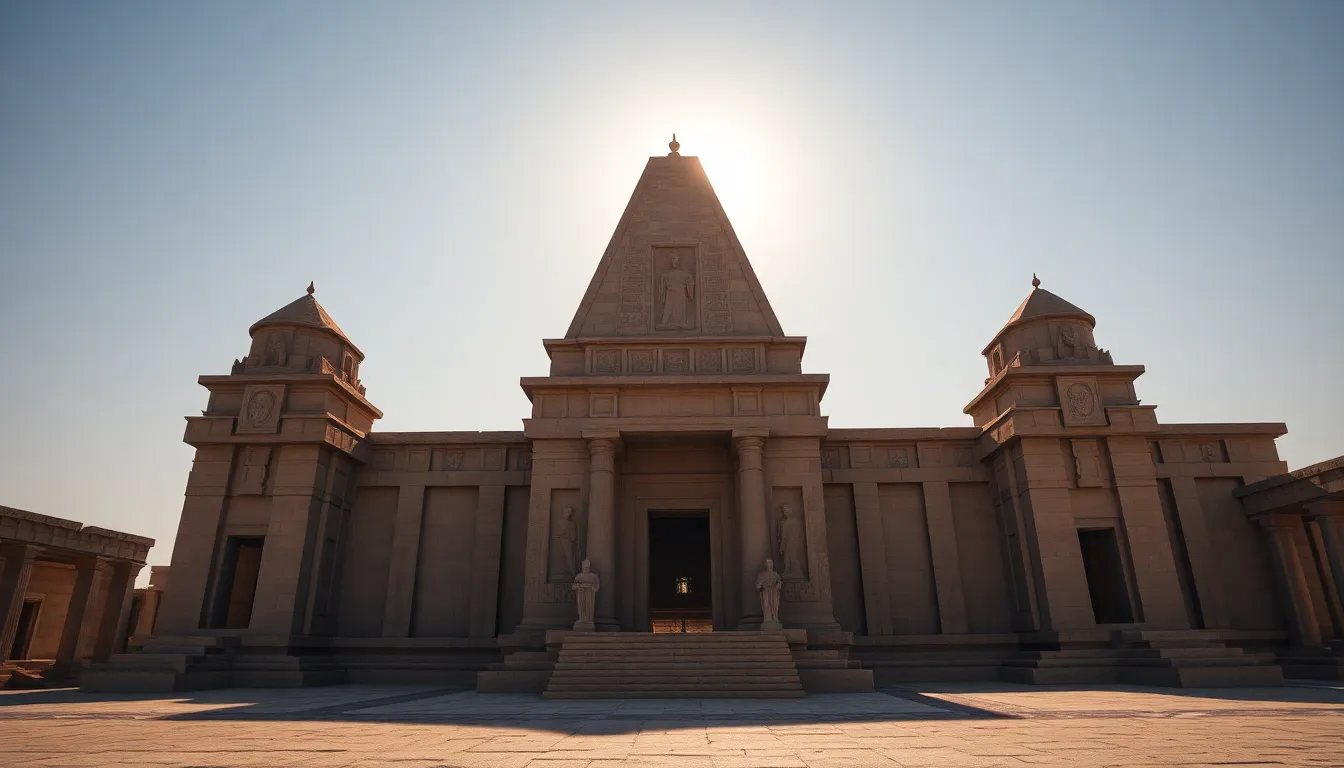The Role of Sacred Geometry in Egyptian Temples
I. Introduction
Sacred geometry refers to the geometric principles that are believed to reflect the fundamental laws of the universe. It encompasses shapes and patterns that have symbolic meanings and are considered sacred in various cultures. In ancient Egyptian culture, geometry played a crucial role, not only in art and architecture but also in religious and spiritual practices. This article focuses on the importance of sacred geometry in the design and construction of Egyptian temples, exploring how these ancient structures embody profound cosmic principles.
II. Historical Context of Egyptian Temples
Egyptian temples evolved over thousands of years, reflecting the advancements in architectural techniques and the changing religious practices of the time.
A. Evolution of temple architecture in ancient Egypt:
The earliest temples were simple structures made of mud brick, while later temples featured grand stone edifices adorned with intricate carvings and massive columns. The design progressed from the early mastabas to more complex hypostyle halls and sanctuaries.
B. Key periods of temple construction:
Major periods of temple construction include:
- The Old Kingdom (c. 2686 – 2181 BCE)
- The Middle Kingdom (c. 2055 – 1650 BCE)
- The New Kingdom (c. 1550 – 1070 BCE)
C. Significance of temples in Egyptian society and religion:
Temples served as the earthly abode of the gods, where rituals, offerings, and festivals took place. They were centers of worship and community life, embodying the relationship between the divine and the mortal.
III. Principles of Sacred Geometry
Sacred geometry is grounded in basic geometric concepts that have spiritual and symbolic significance.
A. Explanation of basic geometric concepts:
Some fundamental shapes include:
- Circles: Represent eternity and the cyclical nature of life.
- Triangles: Symbolize the connection between the divine and the earthly.
- Squares: Represent stability and the physical world.
B. The spiritual and symbolic meanings attributed to these shapes: These shapes were believed to hold power and influence over the natural and spiritual realms, guiding the design of sacred spaces.
C. The connection between geometry and cosmology in ancient Egypt: Geometry was seen as a reflection of cosmic order, with temples designed to align with celestial bodies and natural phenomena.
IV. Geometric Design in Temple Layouts
The layout of Egyptian temples was meticulously planned, often adhering to strict geometric principles.
A. Analysis of the overall layout of major Egyptian temples: Most temples followed a longitudinal axis, leading from the entrance through a series of rooms to the innermost sanctuary.
B. Specific examples of geometric patterns:
Temples often featured:
- Axes: Aligning with cardinal points and celestial events.
- Symmetry: Creating a sense of harmony and balance.
C. The role of orientation and alignments in temple design: Many temples were oriented towards the rising sun or specific stars, reinforcing their connection to the cosmos.
V. Symbolism of Sacred Geometry in Temple Art and Decoration
Geometric motifs were extensively used in temple art, enhancing the spiritual atmosphere of these sacred spaces.
A. Use of geometric motifs in hieroglyphics and reliefs: Patterns such as spirals, interlocking shapes, and fractals were prevalent, often conveying deeper meanings related to creation and the divine.
B. The significance of these patterns in ritual and worship: These geometric designs served as visual prayers and symbols, facilitating a connection between worshippers and the divine.
C. Case studies of notable temples:
- Karnak: Known for its grand hypostyle hall and intricate carvings.
- Luxor: Features symmetrical layouts and detailed geometric motifs.
VI. The Mathematics Behind Sacred Geometry
The construction of Egyptian temples required advanced mathematical knowledge and skills.
A. Exploration of mathematical principles used in temple construction: Ancient Egyptians used principles of geometry to calculate areas, volumes, and alignments.
B. Tools and techniques employed by ancient Egyptian architects: Tools such as plumb bobs, leveling instruments, and measuring rods helped ensure precision in construction.
C. The influence of sacred geometry on structural integrity and aesthetics: The use of geometric principles not only enhanced the beauty of temples but also ensured their durability over millennia.
VII. Modern Interpretations and Relevance
Today, sacred geometry continues to inspire architects, artists, and spiritual seekers.
A. How sacred geometry is viewed in contemporary architecture and spirituality: Many modern designs incorporate sacred geometry to create harmonious spaces that resonate with spiritual energies.
B. The resurgence of interest in ancient Egyptian wisdom: There is a growing fascination with the knowledge and practices of ancient Egypt, particularly in relation to spirituality and healing.
C. Implications for modern design and environmental harmony: Integrating sacred geometry into contemporary design can promote sustainability and a deeper connection to nature.
VIII. Conclusion
Sacred geometry played a vital role in the construction and design of Egyptian temples, reflecting the ancient Egyptians’ profound understanding of the universe.
The principles of geometry not only guided the physical layout of these structures but also infused them with spiritual significance, creating spaces that facilitated a connection between the divine and the human.
As we explore the legacy of ancient Egyptian practices, we are reminded of the importance of geometry in understanding our place in the cosmos. Further exploration of these geometric principles can deepen our appreciation of historical contexts and their relevance in today’s world.




